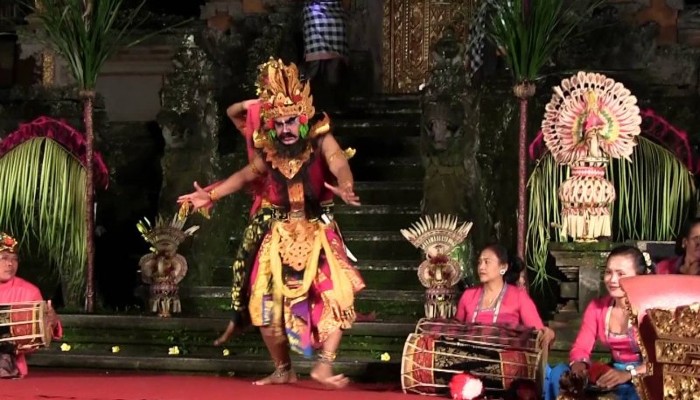The relationship between India and Southeast Asia is rooted in strong cultural and historical connections, making their ties unique and distinct in the contemporary world, writes Dr Premanand Mishra
Civilizational states like India have been redefining the unsettled structuralist notions of the international system through culture and civilizational sensibilities. Ideas of culture and civilization are the foundation of India’s cultural diplomacy which finds a significant resonance in the country’s foreign policy domain under the Narendra Modi government.
The two sets of principles of Indian foreign policy can be explained from the standpoint of the shift from the Nehruvian vision of ‘Panchsheel to PM Modi’s Panchamrit.’
The tenets of Panchsheel (respect for sovereignty and territorial integrity, non-aggression, non-interference in internal affairs, mutual benefit, and peaceful coexistence) go back to the early period of Independent India.
Panchamrit or five themes of the new foundation of Indian foreign policy is based upon (a) Samman — dignity and honor(b) samvad– greater engagement and dialogue; (c) Samriddhi- shared prosperity); (d)Suraksha — regional and global security; and (e) Sanskriti evam sabhyata — cultural and civilizational linkages.
Culture diplomacy, therefore, has become one of the most significant cornerstones of soft power in Indian foreign policy initiatives.
India’s cultural diplomacy towards Southeast Asia
India’s cultural diplomacy towards Southeast Asia brought the value of connecting factors like yoga, cinema, cuisine, and religious symbols converging the past with its present. The role of religious past (particularly Hinduism and Buddhism) and its symbols have been a cornerstone of India’s cultural diplomacy towards Southeast Asia.
If one briefly traces the connection, the canon of civilizational linkages finds the relics of the past settlements in the region through linguistic closeness, coinage with deities of Hindu Gods and archeological traces of trade relations.
Pyu settlement of the first century in the present-day Myanmar, has remnants of Hindu God Vishnu. Similarly, Angkor Wat in Cambodia and Ta Prohm sites scattered through central Thailand called Dvaravati, associated with the Mon inhabitants manifesting Indian culture, with Vaishnavite and Shaivite traditions and also some trace of Buddhist influence.
Ramayana connection
Ramayana connection is another significance of civilizational ties between India and Southeast Asia. It can be traced to the 5th century in stone inscriptions from Funan, the first Hindu kingdom in mainland Southeast Asia.
An outstanding series of the Battle of Lanka from the 12th century still exists at Angkor Wat in Cambodia, and Ramayana sculptures from the same period can be found at Pagan in Myanmar.
Thailand’s old capital, Ayutthya founded in 1347, is said to have been modelled on Ayodhya, Rama’s birthplace and setting of the Ramayana.
New versions of the epic were written in poetry and prose and as dramas in Burmese, Thai, Khmer, Lao, Malay, Javanese and Balinese, and the story continues to be told in dance-dramas, music, puppet, and shadow theatre throughout Southeast Asia.
The Thai Epic Ramakien is based on the Ramayana, and the city of Ayutthya was named after Ayodhya.
In Lao PDR, the popular version of the Ramayana is called Pha Lak Pha Lam, whilst in the Philippines the folk narrative holds much resemblance to the Ramayana. An adaptation of the Ramayana called the Yama Zatddaw was also introduced as an oral tradition in Myanmar.
In Indonesia, the Ramayana is called the Kakawin Ramayana, whilst the Malay version is called the Ramayana Hikayat Seri Rama.”
“Ramayana was already well known in Java by the end of the ninth century is evident from the magnificent series of reliefs carved into the walls of the temples of Prambanan in central Java around 900 AD.
In Bali, the story of Rama still plays a central part in the religious and cultural life of the island. Similarly, Buddhism also builds a foundation of shared culture becoming a core aspect of Indian cultural diplomacy towards Myanmar, Vietnam, Thailand, Cambodia, Laos.
Look East to Act East- ‘shared values-common destiny’
There are three phases of Look East to Act East diplomacy between India and South East Asia.
“The first phase of India’s ‘Look East’ policy (1992-2002) was ASEAN-centered (Brunei Darussalam, Cambodia, Indonesia, Lao PDR, Malaysia, Myanmar, Philippines, Singapore, Thailand and Viet Nam) and focused primarily on trade and investment linkages.
During this period India entered into a Sectoral Dialogue Partnership with ASEAN in 1992 which was upgraded to Full Dialogue Partner status in 1996, when India also joined the ASEAN Regional Forum (ARF).
From 2002 India began holding annual India- ASEAN Summit level meetings. The Phase-2 began in 2003 expanding the definition of ‘East’, covering Australia, New Zealand, China, Japan and South Korea, with ASEAN at its core. Third Phase came in 2014 under PM Modi with Act East Policy (from security to trade).
Conclusion
India-Southeast Asia relations are setting the tone of cultural diplomacy and the ideals of the new foundation of India’s foreign policy have been challenging the anarchic structures of the international system from its own standpoint and own ideals where civilization can converge over values rather than just interest.
In a recent India-ASEAN meet, External Affairs Minister, S Jaishankar summed up this relationship as “For us, political, economic and security cooperation with ASEAN is of the utmost priority. So too are people-to-people linkages, that we are constantly seeking to expand. It is encouraging to note that our partnership acquires ever more dimensions with each passing year. While our achievements are substantial, our ambitions must always remain high.”
Cultural diplomacy through civilization connection has brought India and Southeast Asia from where it all started. It has cemented the relationships from trade security and people-to-people contact. Shared past helps reduce geography and create a new cultural space in relationships to build a common destiny. India-Southeast Asia relations is a paragon of such manifestation.
(The writer holds a PhD in International Studies from School of International Studies, JNU; views expressed here are his own)
ALSO READ: Amnesty slams Pakistan’s crackdown on Baloch protests

Leave a Reply